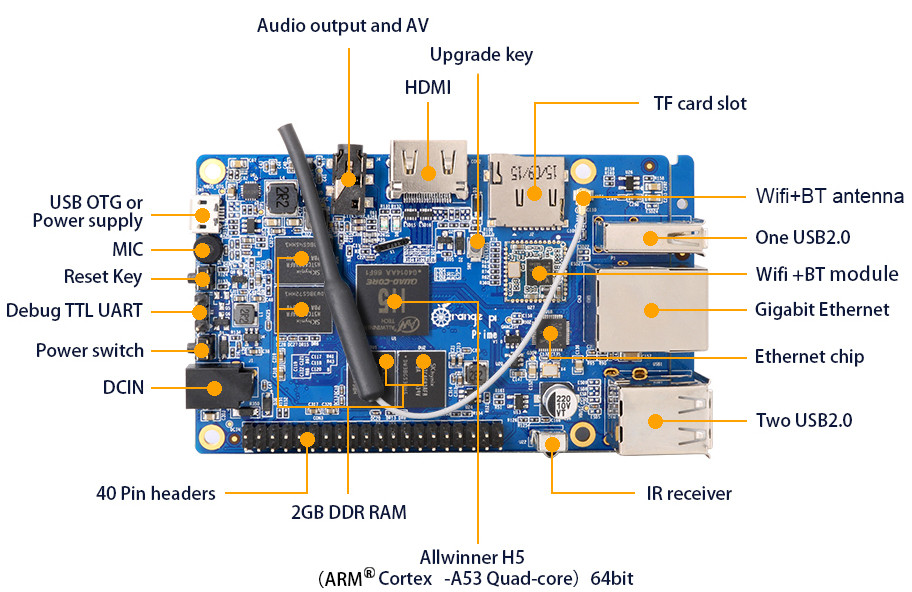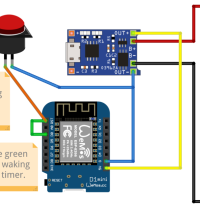- makeITcircular 2024 content launched – Part of Maker Faire Rome 2024Posted 2 weeks ago
- Application For Maker Faire Rome 2024: Deadline June 20thPosted 2 months ago
- Building a 3D Digital Clock with ArduinoPosted 7 months ago
- Creating a controller for Minecraft with realistic body movements using ArduinoPosted 7 months ago
- Snowflake with ArduinoPosted 8 months ago
- Holographic Christmas TreePosted 8 months ago
- Segstick: Build Your Own Self-Balancing Vehicle in Just 2 Days with ArduinoPosted 8 months ago
- ZSWatch: An Open-Source Smartwatch Project Based on the Zephyr Operating SystemPosted 9 months ago
- What is IoT and which devices to usePosted 9 months ago
- Maker Faire Rome Unveils Thrilling “Padel Smash Future” Pavilion for Sports EnthusiastsPosted 10 months ago
Orange Pi is working to steal the throne of Raspberry Pi

For sure there’s still a long way to go, but Orange Pi is working hard to achieve his rival: Raspberry Pi.
They are trying to customize their boards to meet a wider set of computing needs. Just a few days ago we spoke about two new Orange Pi boards: the 2g IoT and the Win/Win Plus.
Now is time to introduce you the latest board computer: the Orange Pi Prime.
It is almost identical to Raspberry Pi 3 in terms of features, but the Orange Pi Prime has better graphics by using a Mali-450 GPU, which can process 2K video.
The Orange Pi Prime uses Allwinner’s H5 processor, which has four 64-bit Cortex-A53 cores.
Other features on the board include 2GB of RAM, Bluetooth, Wi-Fi b/g/n, three USB ports, and an IR receiver. It also has a Gigabit Ethernet port and other common expansion ports found on developer boards.
It also has an HDMI port to connect displays.
The board supports the Android, Ubuntu, and Debian operating systems. The Aliexpress website says the board will support a Raspberry Pi OS image, which likely means the Linux-based Raspbian OS.
Below you can find the specs:
- Processor — Allwinner H5 (4x Cortex-A53); ARM Mali-450 MP2 GPU
- Memory/storage — 2GB DDR3 SDRAM; 2MB NOR flash; microSD slot (up to 64GB)
- Wireless — 802.11b/g/n and Bluetooth 4.0; antenna
- Networking — 10/100/1000Mbps Ethernet port
- Multimedia:
- HDMI port (supports audio, HDCP, CEC, 30 function)
- RCA/CVBS/AV output (via 3.5mm audio output)
- 3.5mm audio output
- Mic input
- MIPI-CSI input with 8-bit YUV422 CMOS interface, CCIR656 protocol for NTSC and PAL, SM pixel camera sensor, and capture at up to 1080p@30fps
- Other I/O:
- 3x USB 2.0 host ports
- Micro-USB 2.0 OTG port
- GPIO connector with 3x GPIO lines
- Debug UART header (TTL level)
- IR receiver
- Expansion — 40-pin header compatible with Raspberry Pi
- Other features — upgrade key
- Power — 5V DC jack; power and reset switches
- Operating temperature — -10 to 65℃
- Dimensions — 98 x 60mm
- Weight — 48 g
- Operating systems — Android 4.4, Debian Desktop, Ubuntu Desktop, Arch Server, Raspberry Pi Image; Banana Pi Image
















5 Comments